The variety of products for sealing in the retail network is so great that buyers sometimes cannot choose the best way to seal the threads on the water pipe during repairs. However, there is no universal seal, you need to understand which of the materials will be more suitable in a particular situation.
Linen seal
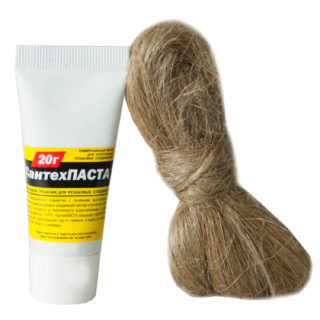
For the processing of flax, plumbing paste is used, otherwise it decays and crumbles on the hot water supply (DHW) pipe, cold water supply (HVS) - rots. The paste-treated threaded connection of the water supply is allowed to be adjusted (adjust the position by turning back) by an angle of up to 45 °, the parts are easier to screw on, the thread is protected from corrosion.
Advantages:
- the lowest price;
- flax seal thread of all sizes;
- any surface is suitable: dirty, wet, rusty, damaged.
Disadvantages:
- it is difficult and long to work with a linen sealant;
- hands, pipes and tools are always dirty from flax and paste fibers;
- when tightening and swelling creates stresses in the thread.
Flax is good for sealing metal pipes and fittings, but care must be taken when handling thin-walled parts and fine threads. Of the combined elements, it is better to take those in which the plastic part is made of more elastic polypropylene.
It is impossible to seal with flax the joints of parts made entirely of plastic - due to the high tightening torque, damage to the walls and breakdown of the thread is possible.
Fum tape
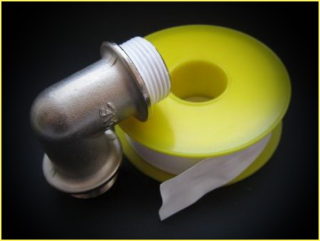
Advantages of PTFE sealing material:
- soft, the parts are easily twisted and easily turned away, you can not be afraid of breaking or cutting a new thread with metal on plastic due to a strong seal;
- the cleanliness of the threaded surface does not matter;
- almost does not stain.
Disadvantages:
- even with a slight displacement of the connection, leakage is possible;
- if the screw is screwed on incorrectly, it is impossible to align the thread by feeding backwards, an attempt will lead to leakage, the connection can only be disassembled and reassembled with rewinding of the tape.
For beginners, FUM tape for sealing water pipes creates the most problems. It is advisable to use it in temporary engineering systems or where a slight violation of the tightness is uncritical, for example, in a country water supply system.
For sealing, parts of any material with medium-sized threads in good condition are suitable. The material is safe for sealing thin-walled fittings. It is contraindicated to seal the threads on the water pipe with tape in case of possible displacement, in the area of shock or vibration.
Plumbing thread

Consists of silicone coated polyamide microfibers. Very durable, cannot be torn by hand.
Benefits:
- equally well seals any thread: old, corroded, wet, damaged;
- after compaction, adjustment to an angle of up to 180 ° is possible;
- tightening torque is less than when using flax, easy to assemble and disassemble;
- less FUM tape gets dirty.
Disadvantage: several times more expensive than flax, comparable in price to FUM tape.
Even a non-professional can work with a thread, technically it is the simplest sealant. Can be used without restrictions on all types of connections, especially suitable for fine pitch threads.For plastic parts, the thread should be used carefully enough.
Silicone tape
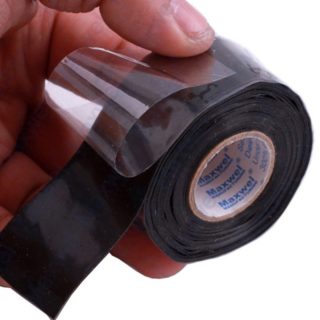
Combines the advantages of these materials. It differs from FUM tape for the better in its resistance to vibrations and the possibility of adjustment at an angle of up to 180 °.
Disadvantages:
- cannot be used on narrow and thin threads;
- is much more expensive than thread and FUM tape.
It is recommended to use silicone tape for sealing metal and plastic pipes and fittings with coarse threads.
Anaerobic adhesive sealant
The latest generation sealant hardens only after tightening, hardens within 20 minutes.
The viscosity, speed of hardening and the strength of fixation of the compositions are different. The thinner the glue, the smaller the thread it is designed for. The joint, assembled with a strong anaerobic sealant, can only be disassembled when heated.
- the fastest installation;
- assembled without keys, with one hand;
- fills all inter-thread space;
- when tightening, there is no skewing, the load on the thread is transmitted evenly;
- adjustment to any angle is possible before setting;
- the connection does not have to hold out, as is the case with flax, ribbons or thread;
- no protruding parts of the seal;
- protects against corrosion;
- resistance to increased water pressure.
Disadvantages:
- the most expensive sealant;
- the junction must be perfectly clean and fat-free;
- you can use the water supply only after the sealant has cured;
- complex disassembly of the connection;
- after heating, during dismantling, a leak may occur at the junction of dissimilar materials;
- gets his hands dirty.
It is used for assembling new threaded connections made without the use of lubricants. Anaerobic water pipe sealant is convenient for making connections in hard-to-reach places. Given the complexity of disassembly, it is better to use it for assemblies that are not planned to be disassembled.
Cold welding
Benefits:
- some types of cold welding are allowed to be applied on a wet surface and under water;
- the resulting mass can be given the desired shape and processed after solidification.
The disadvantage is the high price.
Cold welding is indispensable when it is necessary to eliminate a leak, and there is no time for disassembly or the possibility of shutting off the water supply. This decision is usually temporary.
Cold welding can be used to repair a thread or a chipped part. It is enough to apply the mass to the damaged area, screw on, and then unscrew the mating element and wait for curing.
Seals and rings
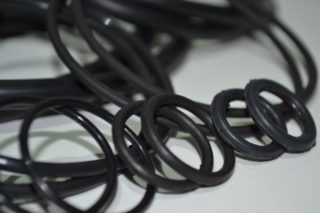
They are used if one of the parts has a limiting collar against which the end face of the second rests. A gasket is placed between the contacting surfaces, if the bead is internal, and the ring, if it is external. Thread sealing is not required, on the contrary, it is considered a mistake.
Rings and gaskets made of soft silicone are best used for cold water supply, and seals made of heat-resistant rubber or paronite should be installed in the hot water supply system.
The advantage is the speed of installation: just install the gasket or put on the ring and tighten. Disadvantage: Due to the requirement for the presence of a bead, they are used in a narrow segment.
Rings and gaskets are used to seal connections when installing fittings and hoses with a union nut, crane axle boxes in mixers.
None of the materials considered can replace all the others. It is always best to keep a set of several seals close at hand and use them as appropriate.

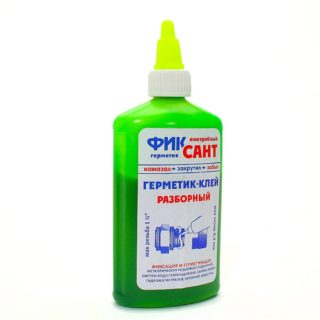









super! Thank you!